Why the LA to Palm Springs ‘desert route’ is the perfect California road trip
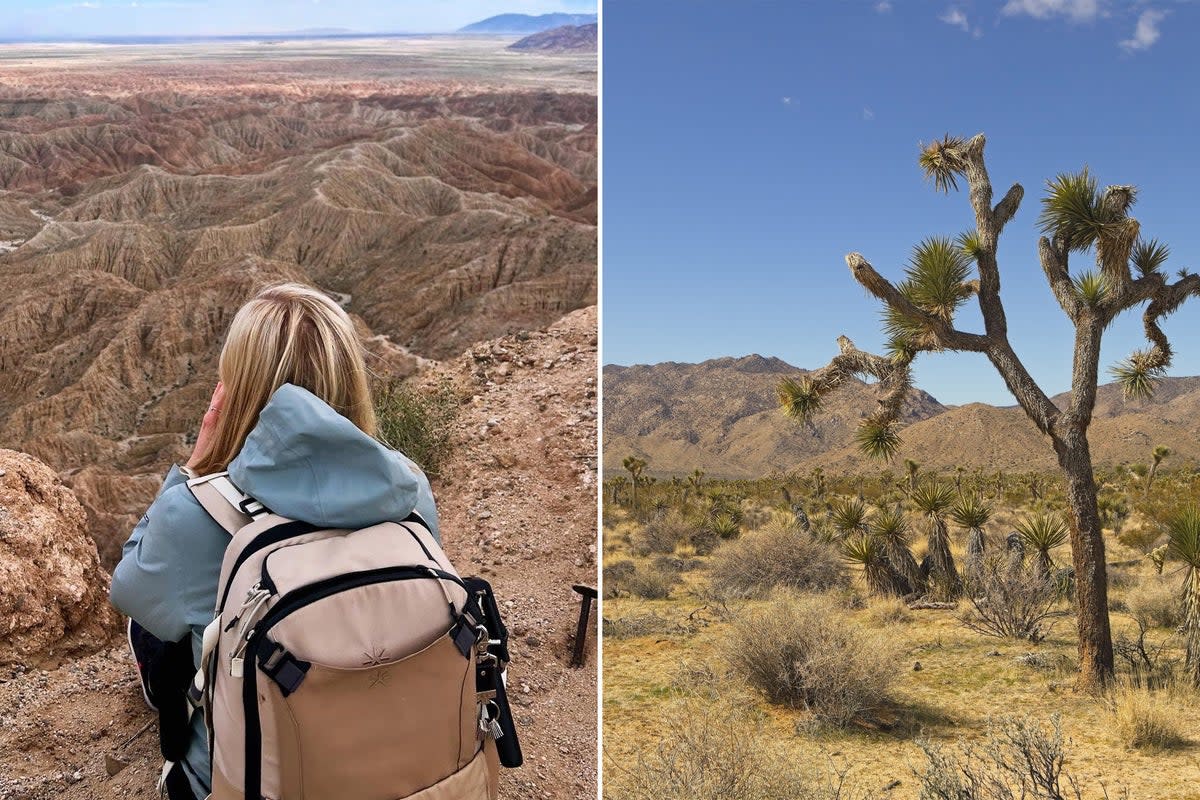
If you’ve watched any number of films lately – Barbie, Don’t Worry Darling and Palm Springs to name a few – you’ll no doubt have heard of Palm Springs. This region encompassing nine resort cities in Southern California is perhaps best known for being a favourite of A-listers – the likes of the Kardashians, Harry Styles and Justin Bieber have been known to bask in its thermal spa waters. It’s where this year a swathe of new hotels, restaurants, and a swanky surf club have popped up amongst an already stellar choice of places to eat, stay and play.
But it’s what lies beneath on which Palm Springs built its reputation. During the 19th century, the Cahuilla Band of Indians Tribe, who had long been harnessing the healing powers of the thermal springs, invited visitors to bathe in them. Around the 1950s, those early bathhouses were replaced by the first spas which evolved into the luxury oases you’ll find there today.
All but one spa in the region are fed by an aquifer just east of the San Andreas Fault. The exception is Séc-he in downtown Palm Springs which taps into an isolated water chamber thought to be 12,000 years old. A sacred natural source to the Agua Caliente Band of Cahuilla Indians, a tribe still around today, this is where Palm Springs’ multi-million dollar spa industry started. The 82C mineral-rich elixir bubbles up from 8,000ft underground and washes over your skin at a balmy 41C in a unique ritual called “Taking of the Waters”. It’s so rich its consistency isn’t far off baby oil, which I discovered as I massaged it into my arms.
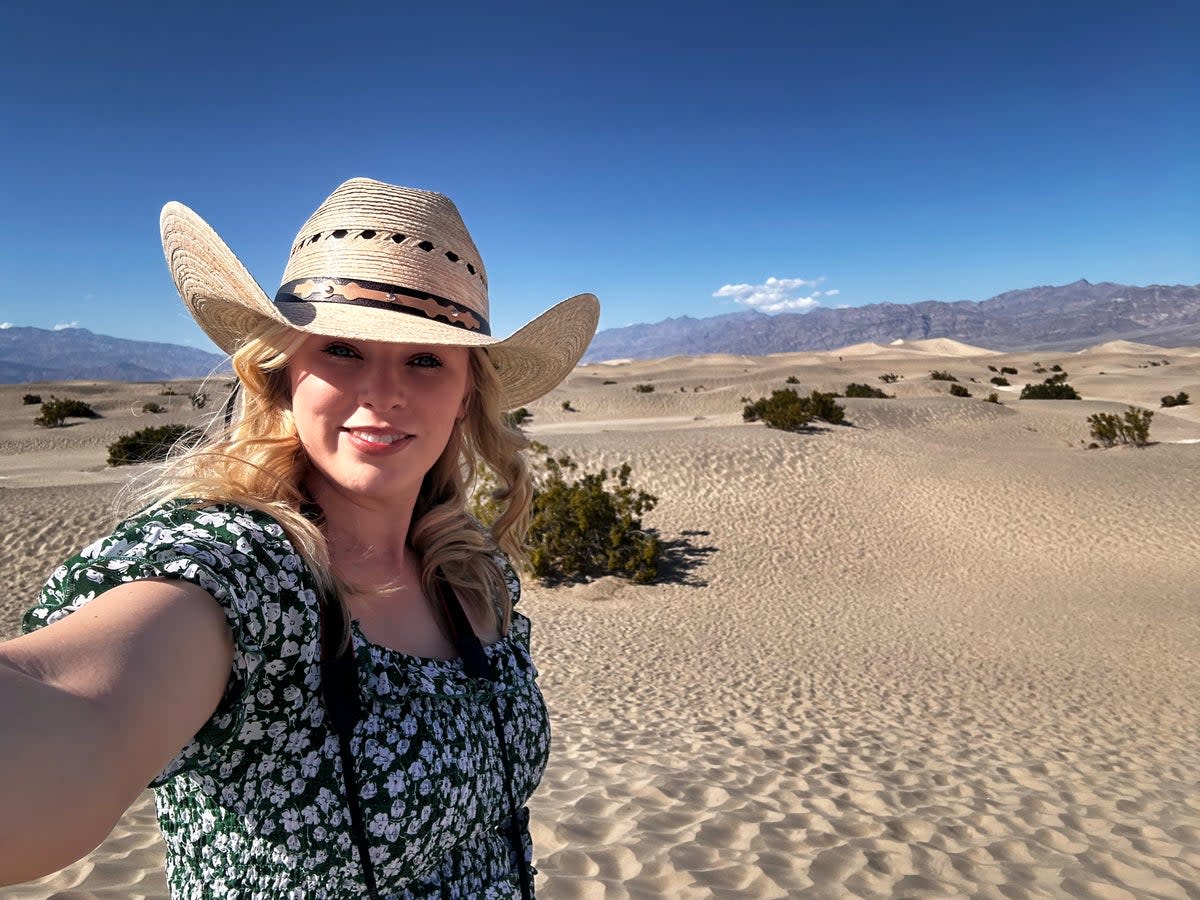
Mere steps away from where the Palm Springs legacy began, an eclectic mix of boutiques, vintage shops and eateries line Palm Canyon Drive. But just as thrilling is the journey there from Los Angeles – that is, if you take the long way around.
With car hire prices falling for the first time since before the pandemic this year (You’ll be looking at around £75 a day with Enterprise, vehicle dependent) and flights to LA starting at £215 each way with Norse, now is the ideal time to hit the highways.
Read more on USA travel:
Naked attraction: Inside Palm Springs’ clothing-optional hotels
Los Angeles by bike: How to have a cycling holiday in this bustling metropolis
Skiing and surfing in California: Can you do both in the same weekend?
Follow the I-10 east out of LA and you could be sipping a date shake beside the pool two hours later (dates are the region’s key export), but you’ll be missing out on an awful lot. Instead, head north to the Mojave desert where epic rock formations, dramatic canyons, and the chance to live out any Old West fantasies await (I bought a cowboy hat the first chance I got. I have no regrets).
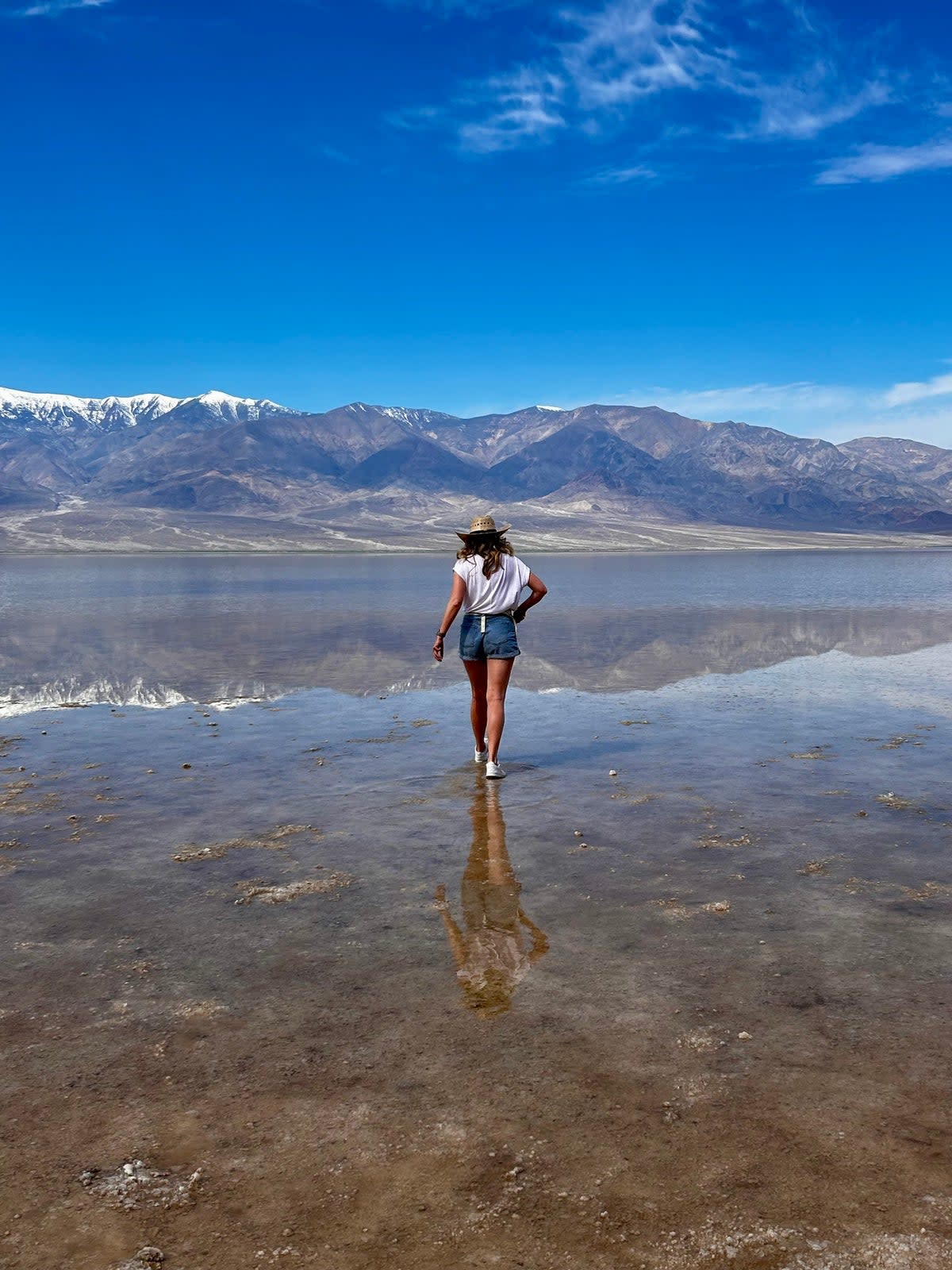
Death Valley was the first stop on my week-long road trip. It’s the hottest place on earth with a searing 56.7C recorded in 1913. In the very spot that reading was taken (aptly named Furnace Creek), The Ranch at Death Valley provides much-needed respite from the afternoon heat with a soak in the pool while gazing at chiselled granite mountains – which despite a ground temperature of 29C in March were snow capped. Dinner was in the Last Kind Words Saloon which offered a small menu of no-nonsense food (mainly steaks or burgers, veggie options available). The resort area also has a general store, milkshake bar, souvenir shop and a US post office, all keeping in with the country-western-meets-1920s-Hollywood-glamour theme (if you can imagine such a combination).
If passing through Death Valley, two nights is ample time to see the key attractions: the Mesquite Flat Sand Dunes, Badwater Basin (an endorheic basin which, when empty, leaves behind incredible salt flats) and Artists Palette (a kaleidoscope rockface of pastel pink, aqua, green and ochre).
As I pressed on south through the Mojave desert (via a small part of the famed Route 66), Yucca plants appeared like a trail of breadcrumbs leading to Joshua Tree, a few at first and then hundreds of them. Fronted by a hipster town with boutique hotels, coffee shops and vintage stores, Joshua Tree National Park is characterised by other-worldly rock formations, cactus gardens and, of course, the Joshua trees (Yucca plants), named after an image of the prophet Joshua reaching to the sky in prayer by Mormon settlers. This near-800,000 acre park straddles the higher and cooler Mojave desert and the lower, hotter and cactus-dotted Colorado desert. As a houseplant enthusiast, I was like a kid in a candy store being surrounded by cacti as tall as me in the cholla gardens.
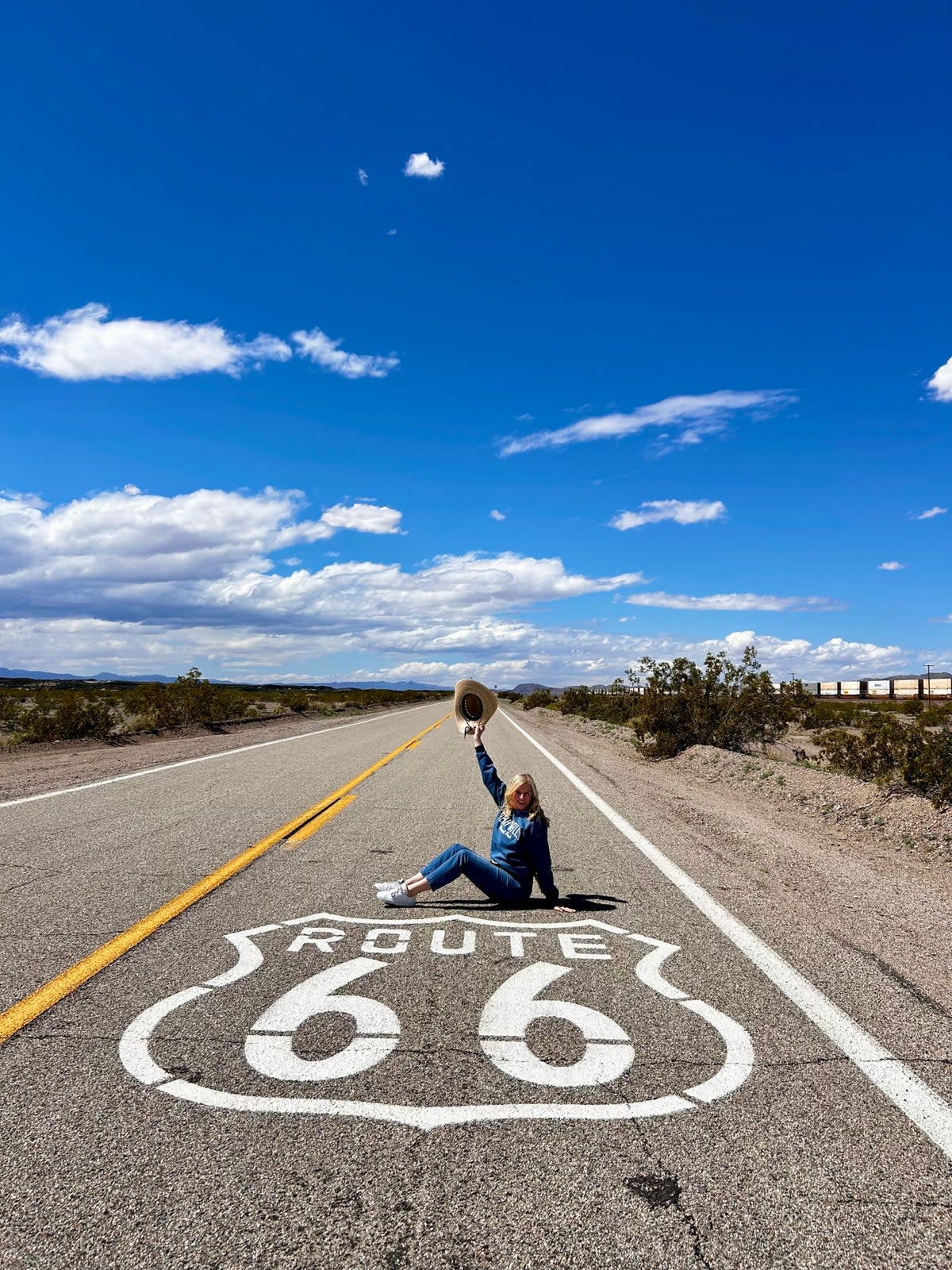
Joshua Tree could easily be a holiday in itself, with days filled with hiking, yoga, shopping and relaxing in hot springs. The chic new Bungalows by Homestead Modern provide that quintessential experience at the heart of The Joshua Tree Retreat Center, a historic hidey hole three miles outside of town. Respectably, all of one’s preconceived stereotypes about Joshua Tree being a hippy, artsy, spiritual type place came to fruition here – and that’s not a complaint. On site are yoga classes, a folk school, a cafeteria selling all sorts of wholesome treats, a book store and two swimming pools, one geothermal.
In stark contrast to Joshua Tree’s flora-filled fields were the badlands in Anza-Borrego Desert State Park, which was my next stop two hours south. A short stint of off-roading down a sand track led me to a view like no other at Font’s Point. Before me was sheer drop of more than 1,200 feet into a canyon formed over millennia by flash floods. So parched and arid, it was hard to comprehend this was all formed by water. Even more astonishing is the fact that I was looking at debris washed in from the Grand Canyon some 430 miles away. These valleys attract many hikers and climbers. During spring, people flock to see the carpets of wildflowers on the desert floor.
Some 650 miles and four days later, I arrived in Palm Springs ready to dive into that Hollywood glam with a soak at the spa and some vintage shopping.
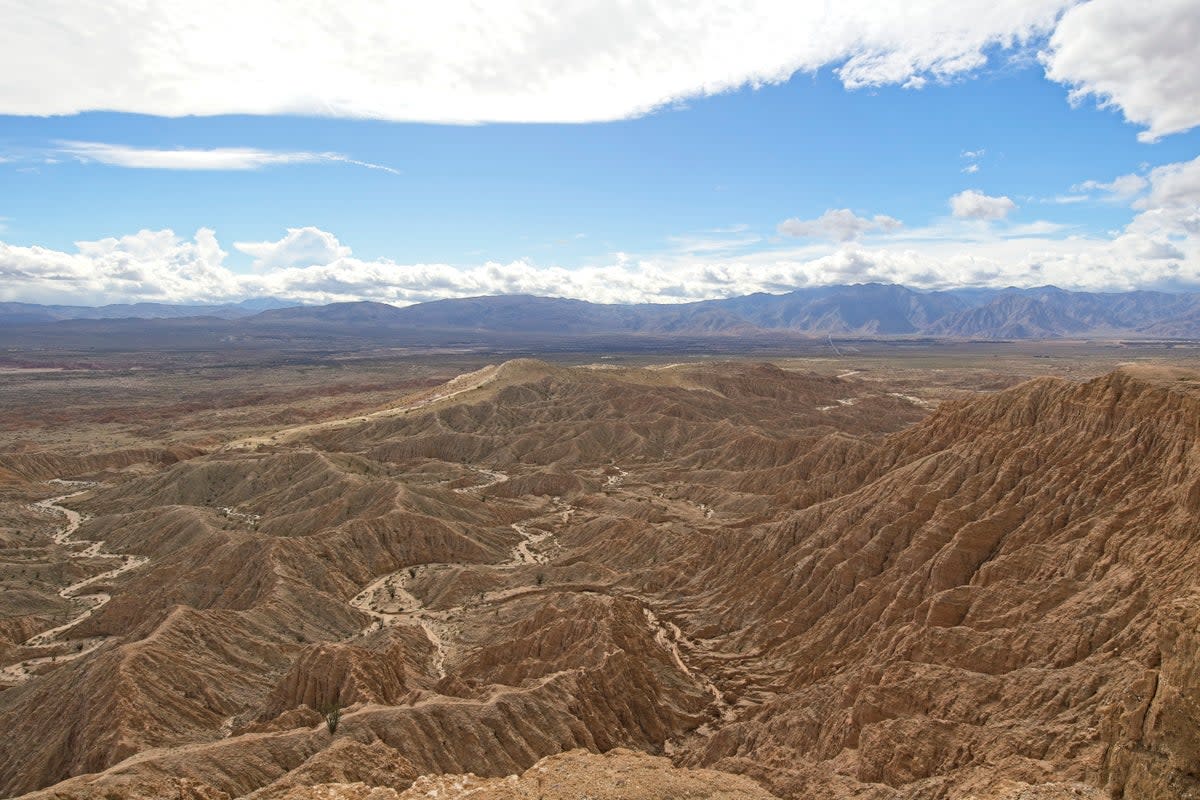
How to get there
Direct flights from London to Los Angeles start at £430 (economy) and £1,049 (premium economy) return with Norse Atlantic Airways. Flight time is around 11 to 12 hours.
Where to stay
Death Valley
The Ranch at Death Valley is a former working ranch turned family-friendly 275-room hotel. Entry to Death Valley National Park is £23 per private vehicle.
Joshua Tree
The Bungalows by Homestead Modern are just a mile from the entrance to Joshua Tree National Park. Find a wide range of breakfasts, including vegetarian and vegan options on site or at Crossroads Cafe in Joshua Tree. Entry to Joshua Tree National Park is £23 per private vehicle.
Borrego Springs
Borrego Valley Inn is an adults-only hotel nestled in the desert. Go for its fun, pink mid-century modern design, stay for the breakfast in bed service.
Palm Springs
At the Ace Hotel & Swim Club, it’s spring break all year with music blasting over the pool, the shops on your doorstep and drag bingo at dinner on Mondays. Stay in quirky, motel-style rooms with access to the spa, pool, bar and restaurant.
Laura travelled to Palm Springs as a guest of Visit Greater Palm Springs.
Read more on how to spend a day in Cathedral City, Palm Springs’ avant-garde neighbour